Science Book Gift Guide 2021
By The Editors
STEM-related books for any season
December 10, 2021
Science Culture Communications Review Scientists Nightstand
STEM books make excellent presents any time of year. To assist you in your shopping, we’ve briefly reviewed below some books for young and older readers that we’ve enjoyed this year.
STEM Books for Young Readers
(Suggested age ranges, where noted, are those provided by the publisher.)
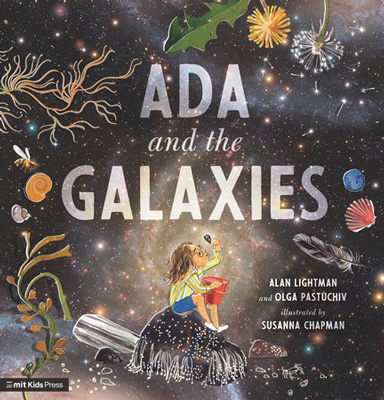
Ada and the Galaxies, by Alan Lightman and Olga Pastuchiv. Illustrated by Susanna Chapman. MIT Kids Press, $17.99.
Ada is a city girl who yearns to see a dark sky festooned with stars, a sight she can only imagine from her New York apartment. When she visits her grandparents on an island in Maine, her first question is, “Can we see the stars tonight?” The answer is “Of course,” but it is the middle of the day, and the wait for sunset can seem interminable to a child who has been anticipating the moment for a long time.
Fortunately, Ada’s grandfather, whom she calls Poobah, remembers what it is like to be young and curious and impatient. He takes her on a tour of other natural wonders while they wait for the Sun to wheel its way below the horizon. Ada and her grandparents hike to see an osprey in its nest; they collect shells on the beach and note the motions of the tides; and when a rolling fog threatens to scotch their stargazing plans, Poobah cannily pulls out a book about galaxies. The pictures send Ada on a cosmic journey, as her mind begins to grasp how astronomers can explore edges of reality far beyond what the eyes can see on their own. When the fog finally clears and the stars bloom into view, she is able to see them in a new way, as part of a great expanse that might be filled with other life. Ada and the Galaxies echoes Robert McCloskey’s classic picture book, One Morning in Maine, both in its setting and in its attentiveness to the ways in which epiphanies can strike without us even realizing. Alan Lightman (himself an astronomer) and Olga Pastuchiv tell their big-small story delicately, without a trace of condescension or unearned sentiment.—Corey S. Powell
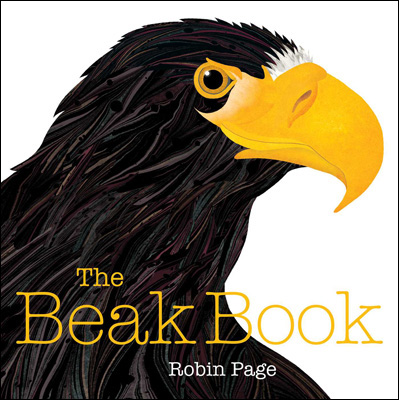
The Beak Book, by Robin Page. Ages 3–8 years. Beach Lane Books, 2021. $17.99.
My favorite books for kids have something an adult will enjoy as well—a fun story, surprising information, or beautiful illustrations. After all, if I’m going to be reading it out loud, I need to be entertained too! The Beak Book fits the bill.
Each page introduces us to a different bird and, in a simple sentence or two, explains how it uses its unique beak. Author-illustrator Robin Page begins with the familiar: The ruddy duck uses its bill to filter its food from the muddy floor of a pond or river. As the book continues, the beaks featured have uses that are increasingly surprising. A favorite spread has on the left-hand page the common tailorbird, which uses its beak to stitch together a nest out of leaves and spiderweb silk; facing it on the right-hand page is the red crossbill, which uses its unusual overlapping beak to pry seeds out of pinecones. Page’s illustrations are stunning—the feathers of the sword-billed hummingbird are a marbled masterpiece in shades of green, and the North Island brown kiwi is an adorable fluff-ball.
The book does not have a narrative, but it does tie things up at the end by returning to the ruddy duck in order to introduce readers to the temporary egg tooth that ducklings use to break out of their shells. The final spread shows where each of the featured species lives, what it eats, and how large it is relative to a human. My four-year-old has brought The Beak Book out on several occasions and demanded that I read it to him one more time. I’ve been happy to oblige.—Stacey Lutkoski

Giant Pandas, by Gail Gibbons. New and updated. Ages 4–8 years. Holiday House, 2002, 2021. $18.99.
In this thorough and thoroughly fun overview of the natural history of pandas, children’s author Gail Gibbons focuses in particular on the science of raising panda babies in zoos. Beautifully detailed ink-and-watercolor illustrations depict the panda’s basic body parts, behavior (including scent marking and play), dietary habits, reproduction, and conservation biology. In prose that children can understand, Gibbons goes over all sorts of details that will interest adults, too. I especially loved the sweet illustrations of the big mama panda and her tiny pink newborn that accompany the discussion of how baby pandas grow. An explanation of why pandas are endangered follows, and Gibbons notes the challenges scientists have had to overcome as they figured out how to increase panda numbers by helping bears in zoos have babies.—Katie L. Burke
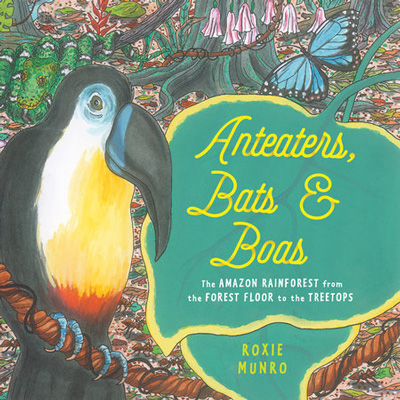
Anteaters, Bats and Boas: The Amazon Rainforest from the Forest Floor to the Treetops, by Roxie Munro. Ages 7–10 years. Holiday House, 2021. $18.99.
Young animal lovers will find this intricately illustrated children’s book engaging. Anteaters, Bats, and Boas takes an encyclopedic approach, listing many Amazon rainforest species and providing a few interesting facts about each. The short entries are a good fit for young attention spans. On the final spread of pages, illustrations from the previous pages are fitted together, creating a tableau of the entire rainforest—which is an interesting way to introduce a child to the concept of ecosystems. Endnotes discuss the different layers of the rainforest and the importance of conserving it.—Fenella Saunders
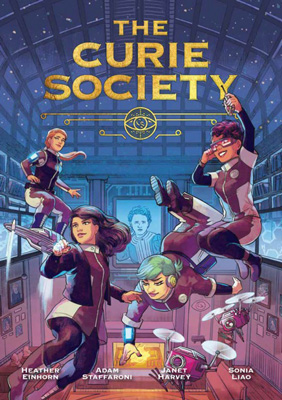
The Curie Society, by Janet Harvey, Heather Einhorn, and Adam Staffaroni, with illustrations by Sonia Liao. MIT Press, 2021. Paper, $18.95.
The Curie Society is a fast-paced and engaging graphic novel that centers on three female college students with different areas of interest, all of whom are invited to join a secret crime-fighting society. The characters have to solve problems by combining their varied skills, using technologies and research findings that are based on the work of real scientists (biographical sketches of whom featured in the back of the book). The main characters develop over the course of the adventure, members of the supporting cast have interesting backstories, and there are plenty of plot twists. Embedded in the text are puzzles that readers have to solve themselves; they can’t just leave everything to the characters. My 10-year-old daughter enjoyed it tremendously, but it would also appeal to older readers.—Fenella Saunders
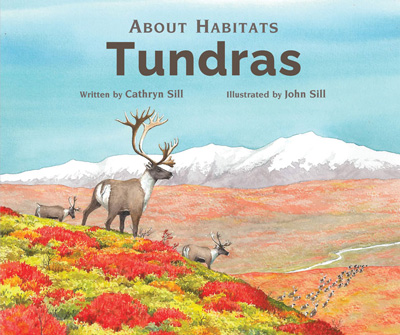
About Habitats: Tundras, by Cathy Sill, with illustrations by John Sill. Ages 3–7 years. Peachtree Publishing, 2021. $17.99.
The text of Tundras (the latest entry in the About Habitats series) is simple, consisting of only a sentence or two per page about tundras and the animals who live in them. The illustrations, though, are detailed and beautiful, and at the end of the book, each illustration is given a more detailed caption. Readers learn that these ecosystems can vary greatly between winter and summer, and are introduced to such concepts as migration, hibernation, and adaptation to extreme conditions.—Fenella Saunders
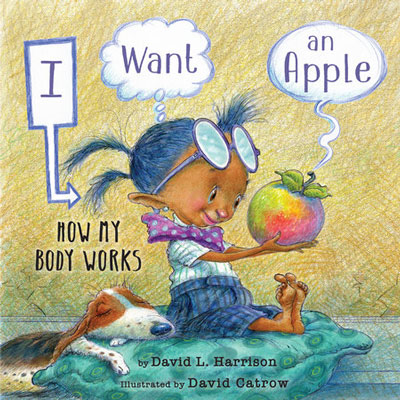
I Want an Apple: How My Body Works, by David L. Harrison. Illustrated by David Catrow. Ages 4–7 years. Holiday House, 2021. $18.99.
The title led me to think this book might explain to children how they end up feeling hunger and having a particular craving. But I Want an Apple instead takes a broader focus, on how the major parts of the nervous, digestive, and circulatory systems work together to find food and convert it to energy. The book’s quirky, colorful drawings depict a vivacious little girl and her dog as she goes about finding and eating an apple. The text is written from her point of view, and she celebrates her body parts along the way. Her brain wants and then helps her find an apple, her nose and eyes help her locate it, and her legs and arms help her retrieve it. Eating the apple rallies her senses, as she crunches into it with her teeth and tastes it with her tongue. Then her tummy breaks it into pieces, and her intestines “keep what I need and throw away the rest”—just as she had thrown away the apple core a few pages earlier. Her heart maintains her “busy, busy” energy as she looks for the apple and then feels good after finishing it. The book celebrates the feeling of having a body and the process of mindful eating. It’s a lovely reminder to children to consider all their sensations as they eat and to love their body for all the things it does for them.—Katie L. Burke
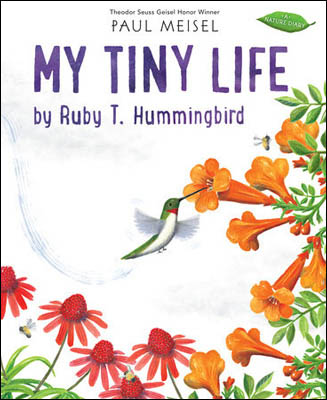
My Tiny Life by Ruby T. Hummingbird, by Paul Meisel. Ages 4–8 years. Holiday House, 2021. $17.99.
Written from the point of view of a young ruby-throated hummingbird, this fanciful book provides children with a simply worded timeline of a hummingbird’s life, from its first peek from the egg through adulthood. Readers learn how territorial and aggressive these little flyers can be, what incredible distances they cover when they migrate to Central America for the winter, and how their appearance changes as they mature (they aren’t born with red throats, for instance). The end pages provide more detailed information about the birds, their range, and their habits.—Fenella Saunders
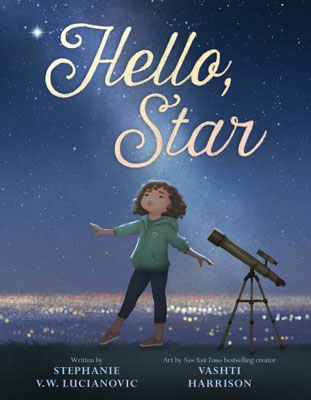
Hello, Star, by Sephanie V. W. Lucianovic, with art by Vashti Harrison. Ages 4–8 years. Little, Brown, and Company Books for Young Readers, 2021. $17.99.
This enchantingly illustrated book is about the importance of empathy in science. It begins with the main character as a young girl. She sees a bright light in the sky, wonders about it, and then learns that it is from a dying star. Worried that it will die all alone, she greets it every night, telling the supernova that she knows it’s there. Her connection with this star helps the girl learn more about stars and astronomy, and she summarizes the different kinds of stars in the sky for readers. Her star is a blue supergiant. And then when she goes to college to study astronomy, she learns what might happen to the star after it dies. There are still many mysteries about that process, and she decides she wants a closer look: She wants to become an astronaut. As a young woman, she develops more expertise and more experience with the technical duties of her chosen profession. Finally, she takes a trip into space and gets much closer to her star. She greets it the way she has greeted it since she was a little girl: “Hello, Star. I’m here.”—Katie L. Burke
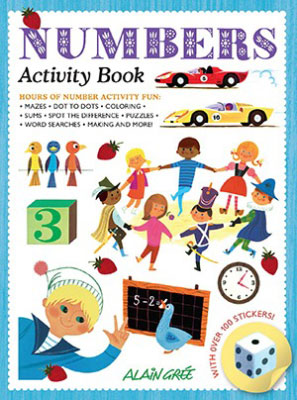
Numbers Activity Book, by Alain Grée. Ages 4 years and up. Button Books, 2021. $12.99.
This educational activity book by French author and illustrator Alain Grée will help kids acquire not just math skills through play, but also observational, language, and motor skills. The book covers all sorts of math, offering a pathway in for kids at a variety of levels: from basics such as counting (in ones or in twos), to addition and subtraction, to simple multiplication and division. Shapes and other geometric concepts are also included, as are a variety of numbers-related activities, such as telling time, following a recipe to make a smoothie, coloring by number, and translating a numerical code into letters that spell words. Sweet, colorful cartoons throughout will inspire young readers to have fun and help guide them through the activities. Several pages of stickers are included; some of these pertain to particular activities, such as a fill-in-the-blank story game, but others are just for fun—for sticking wherever a kid chooses. Several pages at the back of the book provide answers to some of the puzzle games, but not all the activities are the kind that have a right or wrong answer.
Quite a bit of the book requires some reading skills, so although it is recommended for ages four and up, I think six- or seven-year-olds will be at the level to enjoy the greatest number of the activities. Of course, some caregivers may have fun helping a young one get started on new concepts and watching them gain the ability to do more and more of the book’s activities over time.—Katie L. Burke
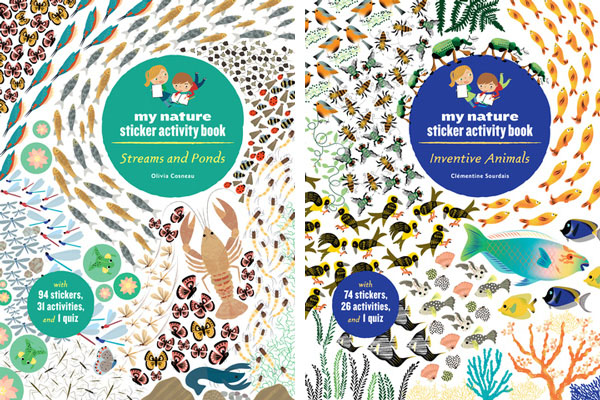
Streams and Ponds, by Olivia Cosneau. Princeton Architectural Press, 2020. Paper, $7.99.
Inventive Animals, by Clementine Sourdais. Princeton Architectural Press, 2020. Paper, $7.99.
These two nature-based activity books invite children to complete pictures by coloring them in, affixing stickers, and occasionally drawing something. They kept my two kids happily engaged for several hours on a rainy day. The text is brief but informative, and my older child enjoyed reading the descriptions of animals, birds, bugs, and fish and completing the quizzes in the back of the book. Even adults may pick up a fact or two they didn’t know before. These two paperbacks are part of a great series of activity books appropriate for children up to about the age of 10.—Fenella Saunders
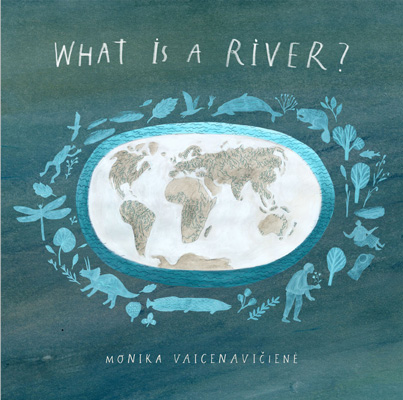
What Is a River?, written and illustrated by Monika Vaicenavičienė. Enchanted Lion Books, 2021. $18.95.
“[The river] has hidden depths beneath its surface. Just like people,” observes the little girl who narrates this poetic children’s book. Its title, What Is a River?, is a question she asks her grandma while the two sit on a riverbank and the girl picks flowers for a wreath. Her grandma gives an appropriately meandering and deep answer as she embroiders a tablecloth, which is a metaphor for the theme of interconnectedness emphasized in the book. Her answer is made up of a lovely balance of facts and metaphors, accompanied by pencil and mixed-media illustrations. A river is a thread connecting people across space and time, a journey, a home to all sorts of living things, a refreshment, a name, a meeting place, a mystery, a history, a smell, depth, energy, a reflection of humanity, a connection, a flow, and a story constantly being written. No one definition or metaphor can fully describe a river. But by the end of the book, a child reading it has a sense of what a river is, not just physically or geographically, but also in essence—emotionally, culturally, and historically.
The reading level of the book, which has been translated from the original Swedish, is fairly high. It includes words, some defined in context, such as ecosystem, civilization, irrigate, philosopher, mischievous, garbage, and hydropower—not to mention many phonetically difficult place names and other proper nouns. An adult would need to help a young child with the text. Nevertheless, the layout of What Is a River? makes it possible for readers to take quick dips as they turn the pages, or to dive deeper into the many tributaries and pools that the narrator and her grandma explore as they journey through this reverie.—Katie L. Burke
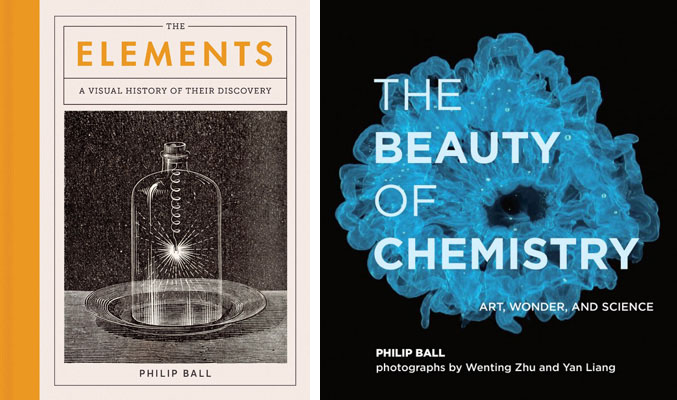
The Elements: A Visual History of Their Discovery, by Philip Ball. University of Chicago Press, 2021. $35.
The Beauty of Chemistry: Art, Wonder, and Science, by Philip Ball. MIT Press, 2020. $49.95.
One of the grandest rewards of the scientific perspective is that it allows us to view the familiar world in fresh and unfamiliar ways. Two recent books by British science journalist Philip Ball, The Elements and The Beauty of Chemistry, form a tidy pair showcasing that transformative power.
The Elements breaks physical reality down into its smallest cohesive parts, as have many other books about the periodic table. What is unusual here is the way this book builds the story back up. Ball, who originally trained as a chemist, plunges deep into the history of the elements, dividing it into eight eras, each defined by distinctive notions of what it means for a substance to be fundamental. Long before the 5th-century BCE Greek philosopher Empedocles introduced the classical view that all matter is composed of four elements (earth, air, fire, and water), ancient cultures were well versed in the singular properties of what Ball calls “the antique metals.” Likewise, the medieval alchemists, the first modern chemists of the 18th century, and the nuclear physicists of the 20th century all looked at the same atoms but interpreted them in different ways. Today, the periodic table is still expanding, as researchers synthesize heavier and heavier atomic nuclei. But even the well-known elements remain in flux, changing with each shift in our scientific thinking. The book’s illustrations, meticulously researched and artfully presented, drive home the point. A gold-platinum mask, forged by an unknown pre-Columbian artist some 2,500 years ago, demonstrates an advanced understanding of alloys, but it stares out of the page with an almost alien visage.
As its title hints, The Beauty of Chemistry flips the balance between imagery and words, although there is a lot of explanatory text interspersed among the color photographs. The book is a visual compendium of what happens when the chemical elements get together and party, producing edgy crystals, undulating precipitates, serpentine flames, and so on. Just when its pages seem to settle into a soothing inorganic rhythm, along comes a chapter filled with psychedelic microscopic views of autumn leaves and carnation petals. A few early images of crystals resemble displays one might encounter in a natural history museum. From there on out, though, The Beauty of Chemistry features one of the most precious elements of all—the element of surprise.—Corey S. Powell
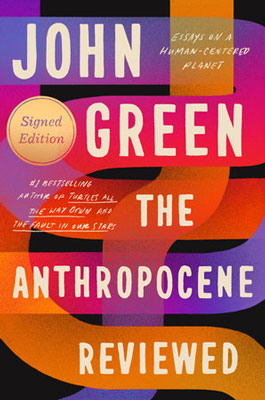
The Anthropocene Reviewed: Essays on a Human-Centered Planet, by John Green. Dutton, 2021. $28.
Young adults on your shopping list may be pleased to receive a book by John Green, who has written a number of best-selling novels for that age group. Lately he has been producing short-form nonfiction instead. Green started out many years ago writing 175-word book reviews for Booklist. The essays in The Anthropocene Reviewed are a little longer than that—most are 4 to 6 pages—but the book’s conceit is that they too take the form of reviews, and they end with him awarding the topic under review one to five stars. They vary in the extent to which they are poetic or whimsical, but nearly all contain a significant dose of memoir, most are thought-provoking, and cumulatively they are haunted by the dimming of human prospects by climate change—even as the author depicts himself falling in love with the world. Essays with a focus on science include “Humanity’s Temporal Range,” “Halley’s Comet,” “Lascaux Cave Paintings,” “Staphylococcus aureus,” “Bonneville Salt Flats,” “Viral Meningitis,” and “Plague.” In a postscript, Green writes,
When I think of how I have enjoyed the Anthropocene so far, I think of Robert Frost, who wrote, “Like a piece of ice on a hot stove, the poem must ride on its own melting.” So it is with poems, and so it is with us. Like ice on a hot stove, we must ride on a melting Earth, all the while knowing who is melting it. A species that has only ever found its way to more must now find its way to less.
—Flora Taylor
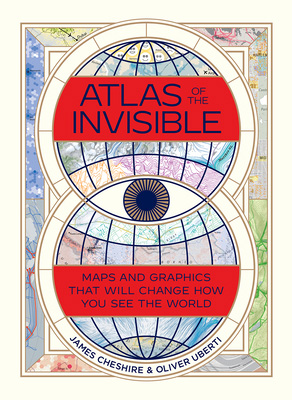
Atlas of the Invisible: Maps and Graphics That Will Change How You See the World, by James Cheshire and Oliver Uberti. W. W. Norton, 2021. $40.
I have several friends and family members who love information and are voracious readers of magazines and websites, but I never see them curl up and read a book cover to cover. If you have similar people on your gift list, Atlas of the Invisible is a great pick: Its fascinating maps, charts, and graphs offer bite-sized morsels of information that make it perfect for dipping into.
These engrossing data visualizations, which are accompanied by brief essays, deal with a variety of subjects grouped into four categories: where we’ve been, who we are, how we’re doing, and what we face. Authors James Cheshire (a professor of geographic information and cartography at University College London) and Oliver Uberti (former senior design editor at National Geographic) created, compiled, or adapted the visualizations from historical and modern sources.
Perhaps my favorite of the book’s maps is “The United Commutes,” which divides the continental United States into more than 50 micro-geographies made up of closely connected hubs within which people travel from home to work. (It’s based on a 2016 article in PLoS One by geographers Garrett Nelson and Alasdair Rae.) For example, most of the state of California falls within four micro-geographies: Calegon (a finger of which crosses the California–Oregon border), Golden Gate (a greatly expanded Bay Area), Sequoia (which includes Fresno), and, hilariously, El Asfalto (which includes the Los Angeles metro area).
“Unequal Loads,” another visualization I found absorbing, uses data from the Organization for Economic Cooperation and Development to chart how many hours of paid and unpaid labor men and women perform in 30 countries. The triangle-shaped graphs show that Sweden has the most balanced distribution of labor and India the least balanced, with women performing nearly six times as much unpaid labor as men. Latvia has the greatest number of hours of paid work for women, and Japan has the fewest unpaid hours of work for men. And in every country, men perform more paid work than women, while women disproportionately shoulder the burden of unpaid labor.—Stacey Lutkoski
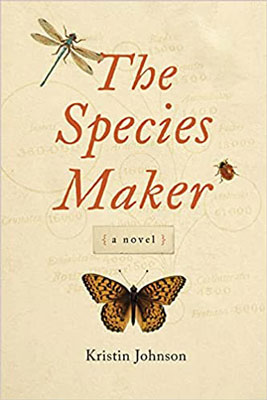
The Species Maker, by Kristin Johnson. University of Alabama Press, 2021. Paper, $29.95.
Americans today are no strangers to heated rhetoric, as xenophobia gives rise to calls for more stringent controls on immigration, workers attempt to unionize in the face of stolid opposition from employers, and streams of misinformation leach away the public’s trust in scientific teachings. For many people, this rhetoric is simply the background noise of our lives; few realize how closely it echoes debates that flared up among Americans nearly a hundred years ago. Such resonance between past and present offers much food for thought in Kristin Johnson’s novel The Species Maker.
The novel’s setting is a small island off the coast of Washington in the 1920s, where entomologist Martin Sullivan is looking forward to a peaceful, productive field season with his colleagues and students. Sullivan is an eminently rational man, asking little of life beyond basic shelter and the time to pursue his true love, the taxonomic classification of weevils. But the outside world, with all its disorderliness, forces itself on his attention: Far away in Tennessee, high-school teacher John Scopes has been arrested for introducing Charles Darwin’s theory of evolution to his biology class. Scopes’s trial, featuring celebrity lawyers Clarence Darrow and William Jennings Bryan, raises tremendous interest in the question of how, or even whether, to teach science in the public schools. Meanwhile, Sullivan’s father is stirring up the local community with his tirades on the plight of the common man and the hollow promises of religion.
The author’s background—Johnson is a professor in the Science, Technology, and Society Program at the University of Puget Sound—seems at times to invade the fictional characters, who chat among themselves in a surprisingly erudite fashion. Generous helpings of real-life historical detail keep the reader engaged, however, and the result is a story that offers a fresh perspective on some all-too-familiar arguments.—Sandra J. Ackerman
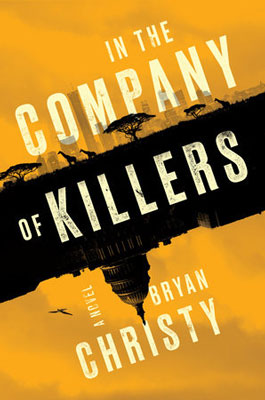
In the Company of Killers, by Bryan Christy. G. P. Putnam’s Sons, 2021. $27.
Bryan Christy, who founded National Geographic’s Special Investigations Unit and has been a National Geographic Society Rolex Explorer of the Year, has written a geopolitical thriller with a protagonist much like himself. Tom Klay, a world-weary journalist at a publication called The Sovereign, investigates wildlife trafficking and the illegal trade in ivory around the globe. When the book opens, Klay is on assignment in Kenya, where a prized elephant is being pursued by poachers, when his best friend is suddenly murdered and Klay himself is wounded. Trying to catch the murderers, he pursues leads in Manila and South Africa, only to discover in the end that he has all along been in the company of killers, many of whom he had never thought to suspect of posing any danger. Christy writes very well: Klay is a complex character, the foreign settings are vivid, and the plot is propulsive.—Flora Taylor
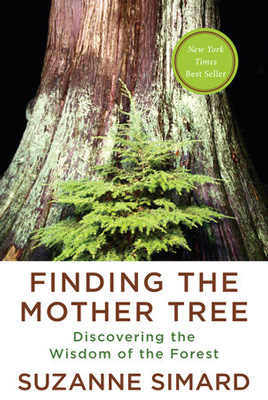
Finding the Mother Tree: Discovering the Wisdom of the Forest, by Suzanne Simard. Alfred A. Knopf, 2021. $28.95.
Forest ecologist Suzanne Simard’s research showing that trees communicate, cooperate, and care for one another via networks of roots and mycorrhiza has overturned conventional thinking about forestry, forest ecology, and plant evolution. In her deeply personal memoir, Finding the Mother Tree, Simard describes her childhood in a logging camp in British Columbia and discusses her daughters, her divorce, and a recent bout with breast cancer, but the book centers on what she calls Mother Trees—the “majestic hubs at the center of forest communication, protection, and sentience” that are the focus of her life’s work. Lovely photographs of people, trees, and fungi adorn nearly every chapter.
While planting crops for logging companies after college, Simard observed that their clear-cutting and planting practices were not good for forest ecosystems. As she began to build her case that trees sometimes cooperate with the living organisms around them, she decided that her goal would be to change U.S. Forest Service policy regarding logging and planting. She writes candidly about risks she took and mistakes she made while working in the field and in the lab. She is also straightforward about the sexism she faced at a Canadian logging company, in the U.S. Forest Service, and in academia; finding constructive ways to respond was challenging. The book contains frequent nods to women whose camaraderie buoyed her morale and stimulated her thinking.
Simard’s fight with cancer is a climactic turning point. Both her diagnosis and her research teach her that strong relationships and good communication promote survival. She slowly pieces together support for her hypothesis that Mother Trees “give their kids a head start [and] tend the village to ensure it flourishes for their young.” The Mother Tree Project, which she began in 2015 during what she refers to as her “rebirth after cancer,” examines long-term relationships among trees in nine experimental forests. The project aims to make trees resilient to climate stress by establishing forestry practices that are holistic and adaptive. Simard’s compelling life story shows that there is much to be learned from the oldest trees in the forest.—Katie L. Burke
The Other Dark Matter: The Science and Business of Turning Waste into Wealth and Health, by Lina Zeldovich. University of Chicago Press, 2021. $26.
It’s unusual to come across a book that makes you say, “Oh, crap!” in a good way. The dark matter referenced in the title of Lina Zeldovich’s new book is human excrement, and she treats it with the same reverence that other writers display toward dark matter of the astronomical kind. It helps that Zeldovich has a distinctive personal connection to feces, as she explains in her opening chapter. As a child, every fall she watched her grandfather empty their septic system and use its contents to fertilize the family farm; years later, she stood by helplessly as Soviet authorities confiscated the farm and carted away the rich soil her grandfather had so meticulously nurtured.
That youthful experience burned into her brain an awareness that excrement is not an embarrassing biological by-product, but a precious resource to be managed. In the book she follows that theme through history and across cultures, exploring the shifting ways that humans have interacted with the digested food we leave behind. She tours 17th-century Japan, where sewage—shimogoe—was a prized commodity, and 20th-century Germany, where the invention of chemical fertilizer encouraged industrialized nations to treat feces as nothing more than disease-filled waste. The modern practice of flushing it into the ocean has upset an ancient natural balance by transferring crucial nutrients en masse from land to water. We can reduce pollution, cut carbon emissions, and create a healthier environment if we learn to appreciate the power of pooping, Zeldovich writes: “It’s the one thing we are all good at.”—Corey S. Powell
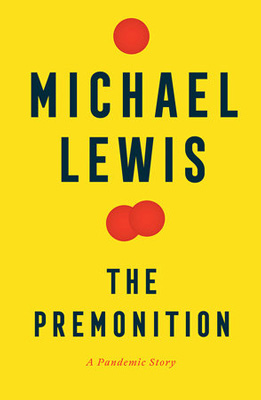
The Premonition: A Pandemic Story, by Michael Lewis. W. W. Norton, 2021. $30.
Like many of Michael Lewis’s books, The Premonition is a page-turner. It also affords deep insights into the U.S. response to the COVID-19 pandemic by examining the evolution of U.S. pandemic strategy over the preceding century.
The book’s gripping “pandemic story” emerges from vivid descriptions of the experiences of its remarkable protagonists. These supersmart, iconoclastic visionaries are exciting to read about; they also have a moral compass (and could thus serve as excellent role models for the young adults on your gift list). They include medical doctors Richard Hatchett and Carter Mecher, both of whom served on a small pandemic strategy team organized by the George W. Bush White House in 2005; Sandia Labs scientist Bob Glass, who brought to Hatchett and Mecher a surprisingly accurate computer model of the effects of social networks on virus transmission; Joe DeRisi, a biochemist whose lab at the University of California at San Francisco excelled at virus identification and analysis; and the book’s central character—feisty, colorful Charity Dean, who was deputy health officer for the State of California when the COVID-19 pandemic began.
By the time COVID came on the horizon, Hatchett and Mecher had long since been pushed out of any position of government influence. Nevertheless, early in 2020, wanting to figure out what was going on with the novel coronavirus, they began exchanging emails and holding conference calls with five other doctors. No one in the federal government seemed to share their sense of urgency or be interested in their ideas, so they decided to try to influence state governments instead. Hearing that Charity Dean would be just the person “to grab hold of an entire state and turn it into an example that might lead the nation,” they brought her into their group.
Leaders in a pandemic have to be willing to take dramatic action based on incomplete information; they need the courage to act boldly and stand up to resistance. Dean has those qualities in spades. She had drawn up a COVID plan for California early on, but her boss (a political appointee) had rejected her ideas and sidelined her. Eventually, though, Dean got the attention of Gavin Newsom, convincing him to become the first governor to issue a statewide stay-at-home order. She called for extensive testing, tracking, and tracing, along with rules for reopening based on metrics of viral spread. DeRisi offered to provide genomic tracking of the virus for free, but state officials somehow never followed through. Frustrated by bureaucracy at nearly every turn, Dean resigned in June of 2020 and entered the private sector, creating a disease-prevention company that she hopes will be used by the public sector. She has brought on DeRisi and Mecher as advisers.
Plagued though the country has been by widespread government dysfunction, it is lucky to have had people like Lewis’s unsung heroes working behind the scenes on its behalf.—Flora Taylor
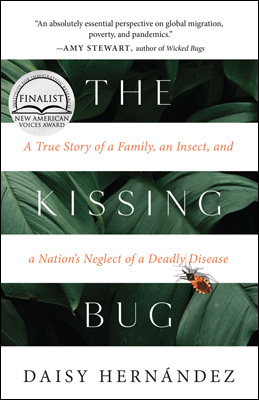
The Kissing Bug: A True Story of a Family, an Insect, and a Nation’s Neglect of a Deadly Disease, by Daisy Hernández. Tin House, 2021. $27.95.
After writer Daisy Hernández’s aunt died, she was driven by her grief to learn more about the illness that killed her mother's sister: Chagas disease, which is caused by a parasite carried by an insect called the kissing bug. This book reports what she found out. Part memoir and part science journalism, it includes her own family’s story, research findings about the insect and the disease, and stories of other people’s experiences with Chagas. Her quest for information takes her all over the United States, to places with a particularly large number of cases, including Texas, California, and Virginia. She also visits her mother’s home country of Colombia, which is where her aunt contracted Chagas.
Along the way, Hernández grapples with her fraught relationship with her aunt. She recalls growing up watching her suffer when the parasite, Trypanosoma cruzi, attacked her digestive system. Searching for the kissing bug (triatominae) deepens her connection to her aunt and the immigrant community.
Chagas is mostly contracted by people living in tropical places. Most people in the United States with the disease caught the parasite in another country, but there are exceptions: babies born to infected mothers and people who are infected by the kissing bugs that live in parts of the southern and western United States. The disease can be treated with antiparasitic medicine during a specific time window. If that has elapsed, the parasite stays in the body; usually it causes no symptoms, but in 20 to 30 percent of cases, heart complications arise, and in a few cases the parasite attacks the esophagus and the colon.
The border that Hernández finds most influences health outcomes is not a geographical one, but what physician Paul Farmer has referred to as the great epidemiological divide: On one side people die of diseases related to old age, while on the other they die much younger because they can’t obtain medical treatment—because they are uninsured, or because of their citizenship status, or for some other reason.
Over the course of the book, Hernández finds healing of a sort. She becomes less afraid of the kissing bug and more informed about the disease and those working to fight it. And she learns more about her aunt and her family. In so doing, begins to see herself in her aunt; she comes to understand what her aunt might have wanted for her, and what kind of aunt she herself can be for the next generation.—Katie L. Burke
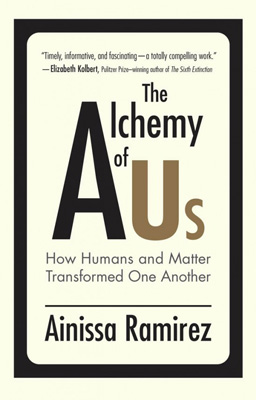
The Alchemy of Us: How Humans and Matter Transformed One Another, by Ainissa Ramirez. MIT Press, 2020. Cloth, 27.95; paper, $17.95.
One common thread in the history of innovation is that new technology often has unintended consequences. That’s a theme that runs through Ainissa Ramirez’s recent book, The Alchemy of Us, in which she explores how eight specific innovations have transformed humanity: clocks, steel rails, copper communication cables, photographic film, light bulbs, hard disks, scientific labware, and silicon chips. Ramirez (who has authored several columns for American Scientist) is a thoughtful writer about the history of technology who is good at digging up missing stories and forgotten characters and divining their significance. Here, for example, she describes how the clock changed the way people sleep and the light bulb changed when they went to bed, noting that both developments influenced how people worked and what employers could demand. One of the lesser known scientists highlighted in the book is Caroline Hunter, a chemist who worked for Polaroid and discovered the company’s involvement in the South African Apartheid system; by getting petitions signed and organizing boycotts, she and her coworkers pressured the company to stop producing the passbook photos used to track Black individuals in that country. Ramirez’s overarching message, that innovation is universal and has featured diverse people from all walks of life, is a gift worth sharing.—Fenella Saunders
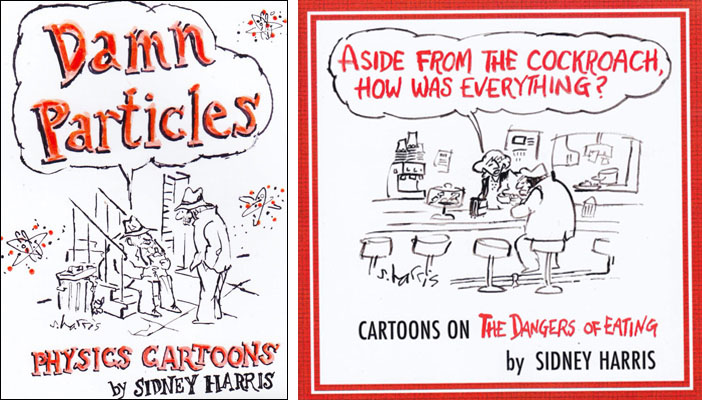
Damn Particles: Physics Cartoons, by Sidney Harris. SCP, 2019 . Paper, $14.95.
Aside from the Cockroach, How was Everything?: Cartoons on the Dangers of Eating, by Sidney Harris. SCP, 2013. Paper, $14.95.
In a 1986 issue of American Scientist honoring Sigma Xi’s centennial, Sidney Harris, a cartoonist whose work often appears in the magazine, wrote about his creative process, emphasizing that he never wants to appear to favor any one area of science. His most recent collections indeed span the sciences. You can read my review of his collection of chemistry cartoons here. His book Aside from the Cockroach, How Was Everything?, whose contents are billed as “Cartoons on the Dangers of Eating,” deals with ethical food sourcing and genetically modified organisms, among other topics. The physics cartoons in Damn Particles touch on such subjects as Schrödinger’s cat, the level of proof required to confirm the existence of new particles, and the irony of micro things being researched in giant buildings. Harris has not lost his knack for evoking a chuckle or grin with a single panel. These books will appeal to a wide range of readers across disciplines—even my 10-year-old finds them funny.—Fenella Saunders
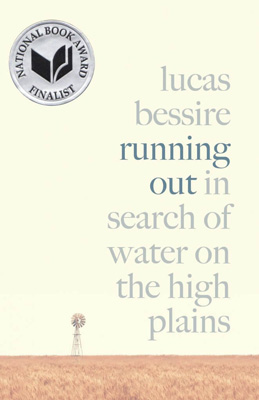
Running Out: In Search of Water on the High Plains, by Lucas Bessire. Princeton University Press, 2021. $27.95.
Anthropologist Lucas Bessire grew up in southwest Kansas, where his family has ranched and farmed for generations. Eighty years ago, his great-grandfather was among the first in the area to pump groundwater from the Ogallala aquifer and use it to irrigate his crops. When Bessire returned to the area in 2016, he learned that the aquifer, which lies below eight plains states in America’s heartland, has some of the highest rates of groundwater loss in the world and is beginning to run dry. To try to get a grip on the cultural forces behind the depletion, he began interviewing stakeholders in the vicinity of his family’s property and wrote this very personal account, which includes both analysis of complicity and elegiac passages about his homeland’s history and our dry future.
We accompany Bessire as he travels around the area finding out how the people who live there see aquifer depletion, which is part of their everyday lives. Some farmers favor pumping the last of the water for selfish reasons; others recognize that they are trapped in a system that compels them to keep irrigating and feel they have no choice about it. A few who try to find a new, more sustainable approach meet with hostility—ranging from snubs by their neighbors to death threats from water miners wanting to send a message that resistance is futile. Bessire finds “a thread of human decency” in the homes of the farmers who share their stories. But he also discovers that regional water governance is “a form of pay-to-play democracy” serving corporate interests. Many members of the Southwest District Water Management Board are themselves top users of Kansas aquifer water, and others are employees of or investors in agribusiness.
In a stirring afterword, Bessire explains that tools and possible policy steps to slow depletion already exist and that other states in the Ogallala region have had some success in slowing decline. Noting the “overarching interdependence” that aquifers force us to acknowledge, he maintains that our only hope is to recognize our common fate and build broad alliances that can confront the habits and forces (including depletionist industries) that are permanently destroying natural resources.—Flora Taylor
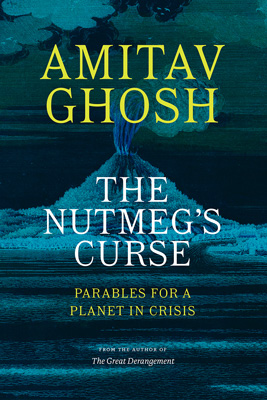
The Nutmeg’s Curse: Parables for a Planet in Crisis, by Amitav Ghosh. University of Chicago Press, 2021. $25.
Topics such as climate change usually encourage looking into the future, but Amitav Ghosh’s captivating new book, The Nutmeg’s Curse, instead looks back in time, tracing the patterns that gave rise to climate change to the beginnings of colonialism and following those patterns all over the globe.
Ghosh begins and ends his “parables for a planet in crisis” in the Banda Islands east of Indonesia, where before the 1700s most of Earth’s nutmeg trees grew. In 1621, the Dutch East India Company, which had long wanted to establish a monopoly on the nutmeg trade, brought troops to the tiny archipelago, intending to remove the Bandanese from the islands and replace them with settlers and slaves. The Bandanese were understandably loath to cooperate. Several weeks after the troops arrived, the falling of a lamp in the billet of the expedition leaders triggered a massacre.
Ghosh is haunted by the fact that this event, which the Bandanese had no way of influencing, became a pretext for their extermination, torture, and enslavement. He goes to great lengths to find out more about what transpired there. “The fate of the Banda Islands might be read as a template for the present, if only we knew how to tell that story,” he writes at the end of the first chapter. In the remaining chapters, he continues his search for a way to tell that story.
Ghosh’s incisive analysis is that although much of the discourse around climate change has focused on science and economics, it is ultimately a geopolitical problem—the outcome of a long history of colonialism, genocide, environmental violence, inequity, and the incessant growth of capitalism. “Climate negotiations,” Ghosh says, “hinge precisely upon issues that are not, and can never be, discussed—issues that are ultimately related to the global distribution of power.” And when it comes to climate change, a shift in the distribution of power has been talked about far less than apocalypse itself. “That which is really harder to imagine than the end of the world is the end of the absolute geopolitical dominance of the West,” he writes. In this struggle for dominance, “what is at stake is a way of life, founded on high consumption and defended by military power, that can only survive if large numbers of poor, low-emitting people are eliminated.” A key element of this dominance is to portray the consequences of violent subjugation of the environment as nature simply taking its course.
For the Bandanese, the nutmeg tree—which they still sing about as they remember their ancestors and lost homeland—has “a vitality that endows it with the power to bless or curse.” There is in the nonhuman world “something unfathomable . . . that cannot be made to submit to the colonist’s will to impose order.” Those who see that world as “an inert entity . . . to be exploited and profited from” have reaped the nutmeg’s curse.—Katie L. Burke
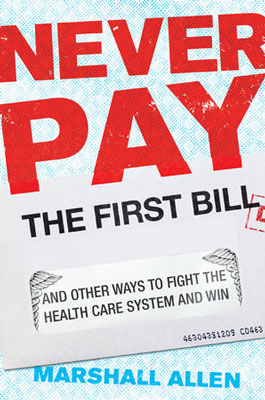
Never Pay the First Bill: And Other Ways to Fight the Health Care System and Win, by Marshall Allen. Portfolio, 2021. $24.
Investigative health journalist Marshall Allen has written an empowering guide for fighting back against the price gouging, coercion, wastefulness, widespread billing errors, inflated medical costs, and fraud that pervade the American health care system. In a country where sick people are routinely exploited for profit and sky-high health care costs contribute to wage stagnation, this book fills a great need. “The [health care] industry operates like a cartel—a coalition of players working together to keep prices high and limit competition,” writes Allen. “They work together to maximize their payout because they’re playing with someone else’s money—ours.”
The book is aimed particularly at the approximately 157 million people in the United States with employer-provided health care plans, and at their employers. The first section goes over how to check one’s bills and health insurance coverage for errors, and how to fight back if necessary; the second explains how to avoid unnecessary procedures and high charges in the first place; and the important third section is aimed at employers, who generally are unwitting about their outsize role in our country’s ballooning health care costs and their power to moderate those costs by negotiating with insurers.
Although most people don’t want to spend their time on the drudgery of fighting medical bills, Allen encourages readers by pointing out that they can usually recoup enough money to more than justify the time spent. He says it is the single best way to fight against exorbitant increases in the price of our health care. Those who are facing expensive procedures or ongoing care and those who make decisions about employee health benefits will find the book particularly helpful. But anyone who wants to understand what is driving overpricing in American health care will find it illuminating.—Katie L. Burke
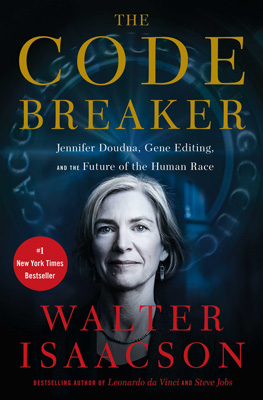
The Code Breaker: Jennifer Doudna, Gene Editing, and the Future of the Human Race, by Walter Isaacson. Simon and Schuster, 2021. $35.
Isaacson delights in his ringside seat close to the centers of discovery and his capacity to open up the arcane world of the lab through vignettes. His book bursts with people and is illustrated with images of every scientist who played a role in transforming CRISPR from an idea into an instrument. For more about this sprawling account of competition for scientific stardom, see Sheila Jasanoff’s full review.
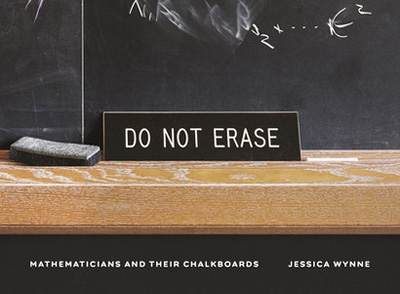
Do Not Erase: Mathematicians and Their Chalkboards, by Jessica Wynne. Princeton University Press, 2021. $35.
Chalkboards are a medium of expression for many types of math discourse. This book features 100 color photographs of chalkboards along with some commentary and biographical information about the person whose math is on display. For a sample photo and more about chalkboard culture, see Brian Hayes’s full review.
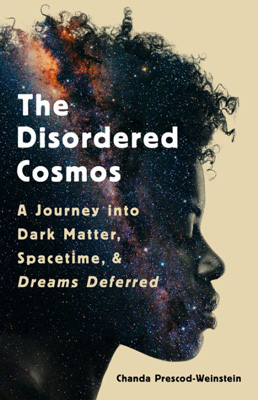
The Disordered Cosmos: A Journey into Dark Matter, Spacetime, and Dreams Deferred, by Chanda Prescod-Weinstein. Bold Type Books, 2021. $28.
Prescod-Weinstein, the first Black woman to hold a tenure-track position in theoretical cosmology, describes her research and reflects on race and gender in The Disordered Cosmos. Her prose lights up with joy as she speaks of the thrill of exploration and the magic of insights won. The book calls on us to examine not just the epistemological successes of science but its institutional failures. For a deeper dive into the book, read Margaret Wertheim’s full review.
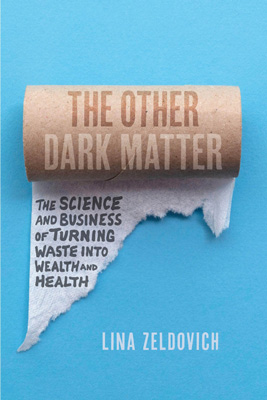
American Scientist Comments and Discussion
To discuss our articles or comment on them, please share them and tag American Scientist on social media platforms. Here are links to our profiles on Twitter, Facebook, and LinkedIn.
If we re-share your post, we will moderate comments/discussion following our comments policy.